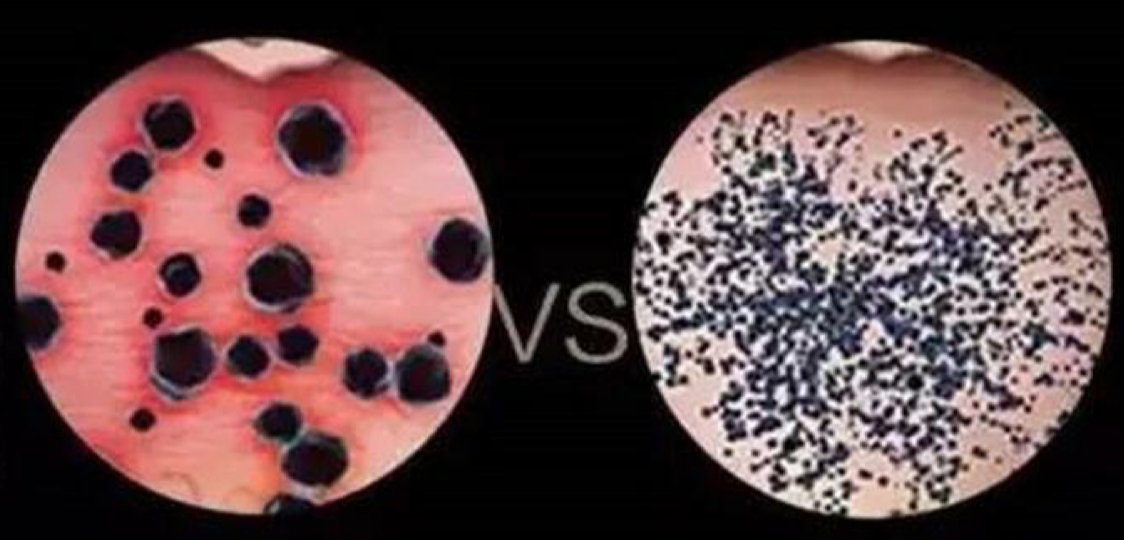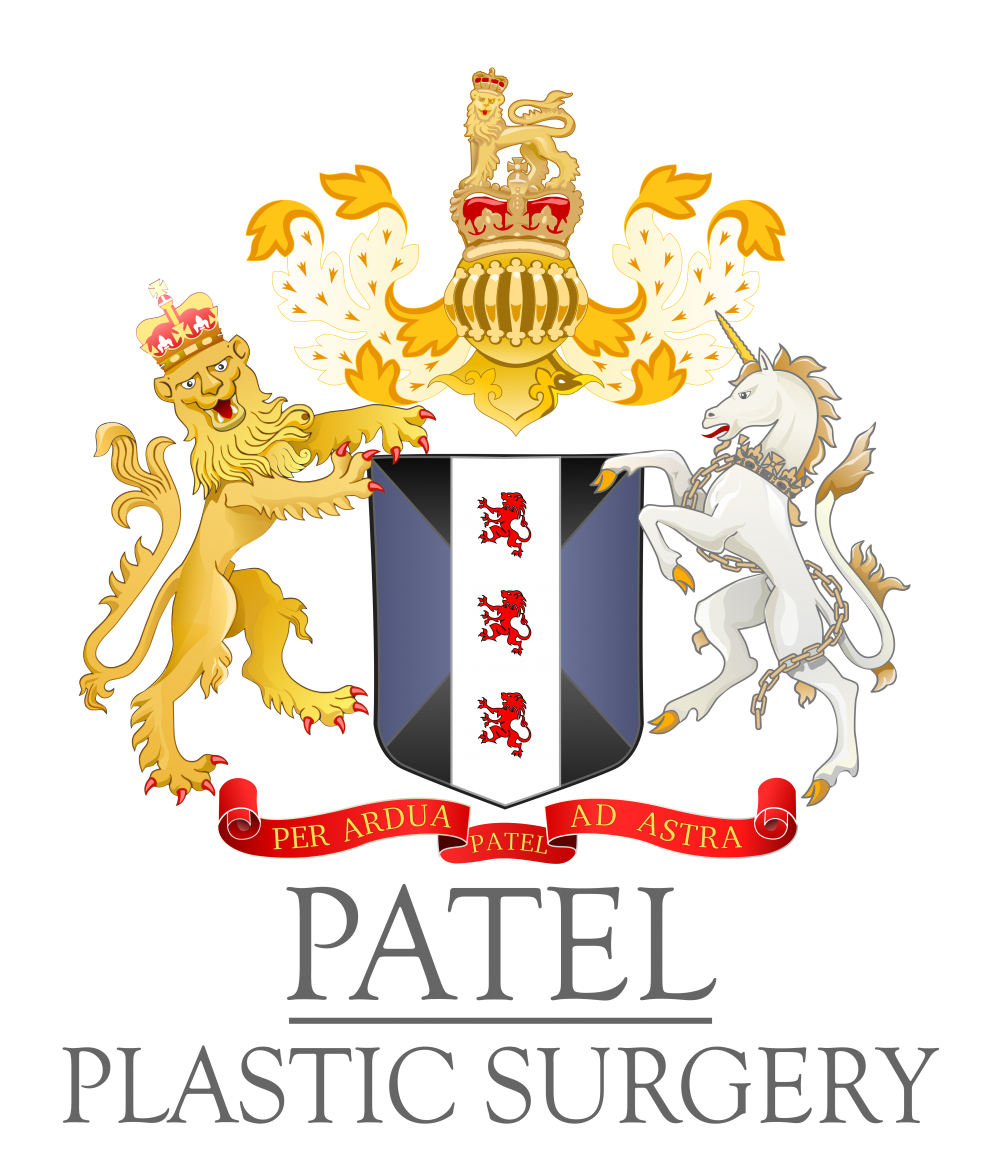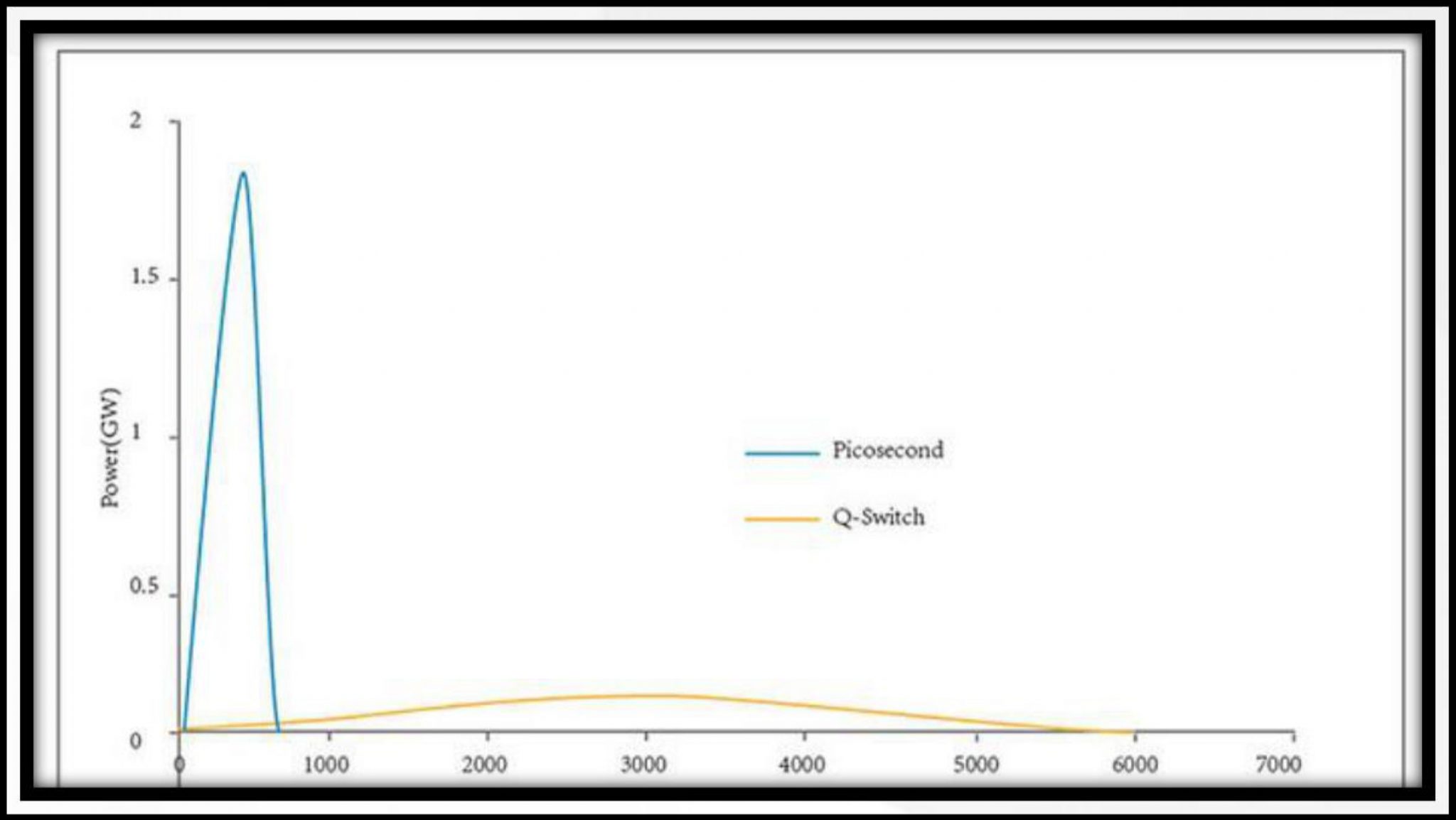FAQ's
Most lasers work on the principle of heating target tissues. The latest ultra-short picosecond lasers allow the delivery of energy in trillionths of a second. This very short duration makes it possible to fragment tattoo pigment and pigment (in conditions like melasma) with very little collateral heat effects. This results in quicker improvement in tattoos and pigment problems. Furthermore, with appropriately chosen wavelengths (the longer wavelength 1064nm) anddelivery head, subcutaneous tissues can be affected which improve tissue with tightening of the deeper dermal tissues. This can be used to improve wrinkles and pores.
The biggest advance in the use of Nd:Yag lasers has been the development of the picosecond lasers. These lasers deliver very high energy in a very short pulse duration. The pulses are measured in trillionth of a second. The high-energy, short-pulse mode of delivery decreases collateral heat, making this treatment much safer for superficial pigmentary conditions like melasma.
Tattoo particles are fragmented into much smaller pieces than with a nanosecond Nd:Yag laser, allowing the body to absorb the particles quicker and more efficiently. This allows us to give an improvement with fewer treatments. Traditionally, the number of treatments needs has been up to 12 or more laser treatments for tattoos using nanosecond Q-switched Nd:Yag lasers. With the picosecond laser, impressive results are seen after as few as five treatments. There is also less collateral heat which means there is less pigmentary abnormality compared to the nanosecond Q-switched Nd:Yag lasers.
Discomfort: because the laser is delivered in very short durations, there is less heat and therefore less pain with the treatments. Many of our patients don’t even need topical anesthetic application because of this advanced technology.
The picosecond laser can be safely used in Fitzpatrick skin types I, II, III and IV with appropriate setting of the parameters and J/cm2.
Image: shows the difference between the normal Nd:YAG laser and the Picosecond laser which delivers a very high energy over a very short perior of time (picoseconds)

Image: Left shows the tattoo pigment in deep dermis. The middle image shows fragmentation after traditional Q-switched Nd:YAG laser treatment. Right shows the fine fragmentation of the pigment with the Picosecond laser

Image: Left shows large particles aftertraditional Q-switched Nd:YAG laser treatment. Right shows the fine fragmentation of the pigment with the Picosecond laser
We have the ability to deliver picosecond laser pulses using all the wavelengths, 532nm, 585nm, 650nm,1064nm. The darker pigments like black and blue respond beautifully to the 1064nm wavelength which is the wavelength used by most tattoo-removal lasers but not in picosecond mode. The red pigments respond to the 532nm wavelength. Brown and yellow pigments respond to the 585nm head and green pigment to the 650nm laser head. By having the ability to use all the wavelengths in picosecond mode, we are able to reduce the pigment more efficiently and with minimal collateral heat which means one gets less of pigment changes or scarring.
We have found that instead of needing 7 to 10 treatments, using these advanced picosecond delivery and with the multiple wavelengths, we can clear up tattoos faster which means less expense to our patients.
The combination of the different wavelengths, the picosecond technology, the different laser heads (cellular, fractionated, focus head, etc), it is possible to gently and efficiently improve the following:
Hyperpigmentation conditions like melasma
Pigmented skin lesions
Skin texture
Pores (reduction of pores which has hitherto not been possible)
Wrinkle reduction
Acne scar improvement
Because of the technology, there is minimal redness and little if any downtime and minimal to no pain
The lack of heating of the surrounding tissues makes picosecond lasers very safe with minimal risk of injury to surrounding skin.
When removing tattoos, topical anesthetic and cooling is used which makes tattoo removal relatively comfortable. With small and intense tattoos, we achieve complete anesthesia with local anesthetic infiltration.
For the treatment of skin for skin rejuvenation, Hollywood carbon peeling, pore tightening, wrinkle reduction and skin tightening, the sensation is of a mild rubber-band snap. In fact many patients tell us that the level of discomfort is only 1 – 2 out of 10.
The lack of heating of the surrounding tissues makes picosecond lasers very safe with minimal risk of injury to surrounding skin.
Tattoo removal is done once every six weeks or so over about four to five treatments and each treatment time depends upon the size of the tattoo. However, the modern picosecond lasers are fast and efficient and take considerably less time than the older lasers and are more comfortable!
For skin rejuvenation, wrinkle reduction, acne scar reduction, skin tightening and Hollywood carbon peels, the length of each treatment is about 20 mins.
It is best to avoid getting a tan prior to and after the laser treatments (as with most laser treatments) but with the use of SPF30 sunscreen, you can resume normal activities. There are no physical restrictions after treatment. Most patients can resume wearing of makeup and the use of creams a day after treatment except for tattoo removal where we would have you use a topical moisturizer, and rarely a topical antibiotic.
Tattoos: depending upon the color of the tattoos, the density of the pigment, the age of the tattoos and whether done professionally or by an amateur, the number of treatments needed with traditional tattoo lasers was as many as 10 – 15. With the modern picosecond lasers, a very substantial improvement is seen with five treatments.
For skin rejuvenation, pore tightening, wrinkle reduction, skin tightening and treatment of pigmentary abnormalities (lesions, melasma, etc), patients need between 3 and 5 treatments approximately once a month. The Hollywood Carbon peel is often performed before any social event and give a marked reduction in skin discoloration and smoothness to the skin. In Hollywood, stars are known to have this before Oscars, etc and is a very popular treatment.
The lack of heating of the surrounding tissues makes picosecond lasers very safe with minimal risk of injury to surrounding skin. However, with tattoos, some degree of hypopigmentation can occur. With the treatment of acne scars, wrinkles, carbon peels and skin rejuvenation, the picosecond laser is very save and we have not encountered scarring. In patients with melasma, there is an effect of hormones as well as sun-exposure and we will guide you as to how best to look after the skin.
The lack of heating of the surrounding tissues makes picosecond lasers very safe with minimal risk of injury to surrounding skin.
Tattoo removal results are permanent. With acne, there is marked reduction in scarring and skin irregularity. Patients with active acne will still need to continue with their systemic and topical treatments. Treatments can be repeated over time to keep the scarring caused by acne under control.
After skin rejuvenation, our patients see a marked improvement for prolonged periods of time, especially if they use appropriate moisturizer and sunscreen protection (SPF30+). Maintenance treatments once every six months yield continued improvement.
After treatment of pores, there a reduction in the size of the pores for many months. The causes for enlarged and enlarging pores are manifold and maintenance treatments are administered according to the degree to which the patient wants to improve the condition.
Hollywood Carbon Peel: these treatments give very pleasing improvement in the overall tone and texture of the skin and are often performed prior to any important occasions. All our facelift and necklift patients and also our other cosmetic patients undergo this carbon peel together with the fractionated Nd:Yag laser skin firming treatment to keep their results looking excellent.


